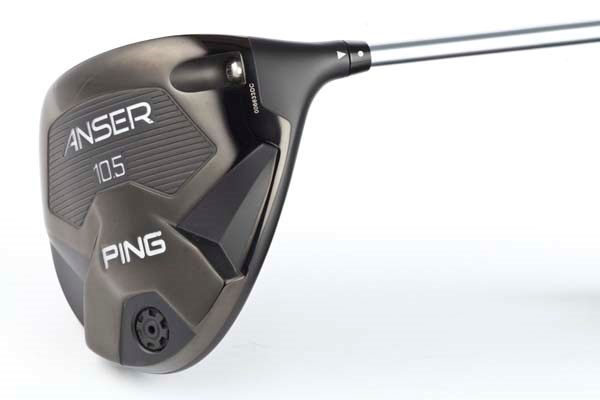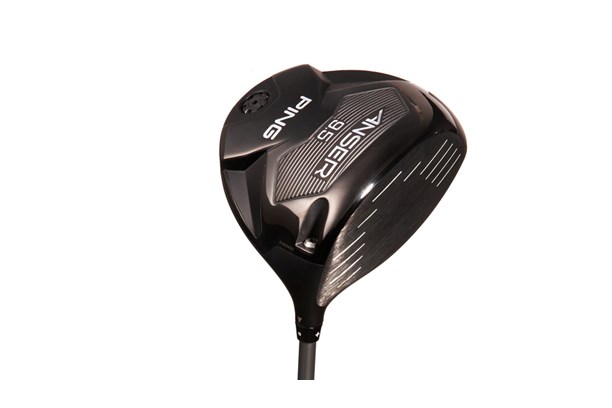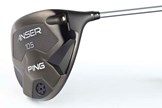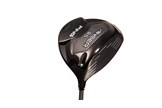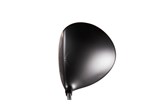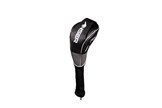Ping Anser Driver Review
Last updated:
-
At a glance
- TG Rating
- Owner Rating
-
Pros
Most will enjoy the matt finish. Low-spin nature will help better players. High-end shaft options help justify the investment.
-
Cons
High handicappers with lower swing speeds and less consistent striking will prefer the forgiveness in the G25.
What we say...
2013 Driver Test
Just like the G25, our entire testing team liked the classy matt black finish. James admired the larger clubface and could see himself hitting it off the fairway, too. James and Joel, the two highest swing speeds on test, got the most out of this driver, launching high enough to keep the ball in the air while low-launching Kit struggled to get consistent distance due to the lack of spin.
Graeme felt his swing speed was a little low to get the best out of this club while the lack of their average for all testers other than Chris, who felt the classic shape was a little behind the times and didn’t scream forgiveness. Sure enough, his dispersion was generally pretty high with this driver.
Long Term Test – James Ridyard Pro
I was impressed by this on TG’s Better Player’s driver test. My old faithful Callaway was brilliant, but the Anser gave me more yards and forgiveness. I like the aesthetics and it’s very easy to clean. It’s also great that the shaft works specifically with the head. My only gripe? The adjustability isn’t as wide-ranging as some.
Pros: Stunning looks, easy to keep clean and lots of distance.
Cons: Some golfers will point to a lack of adjustability.
Better Players Driver Test Nov 2012 – Key Comments
JR: The shaft somehow felt shorter and more controllable than the others, and it felt sensational. I loved the finish and the consistency was impressive. My favourite.
DW: The feel off the face was not that impressive, but the results were good.
CS: This was the best driver in the entire feature for me. I’m not usually a Ping fan, but this went very well – on this one product, I am a convert.
MR: Didn’t feel like it came off the face as well, but still looked good at address and was solid.
Tested by Jon Greathead (8 h’cap)
With all the adjustable goings-on of late, a part of me has wondered why Ping hadn’t followed the likes of Nike, TaylorMade and Callaway. Well, now they have.
Last month we told you that the brand wanted full confidence in the product before putting it to market, hence why the Anser driver has taken a tad longer to join the adjustable party. But fashionably late is good, and when it looks as good as this, it’s a welcome guest.
The obvious starting point is the adjustability – at just plus or minus 0.5°, Ping aren’t ripping up trees but where they are blazing a trail is that the Anser really doesn’t look adjustable. Some other products feature a highly-visible hosel design, whereas Ping’s latest creation doesn’t – it blends beautifully with the shaft, and looks part of the product rather than a bolt-on.
I currently have a G20 driver in the bag, comfortably the most consistent I’ve ever used – and the Anser features similar properties. The ball flight is also high (although not as high as the G20 on first inspection), which translates to added distance – it boasts a 460cc head with a high MOI, so if you do get one out of the toe or the heel, the results aren’t horrendous.
Over the years, Ping’s custom-fitting process has become legendary and now they’ve gone a step further by introducing four sensational shaft options; golfers can be fitted for the TFC 800D (Soft R, R, S and X flexes), the Aldila Phenom (R, S flexes), Fujikura Blur Red (R, S and X flexes) and the Mitsubishi Diamana ‘ahina – and for no additional cost.
Pros: Sensational entry into adjustability, done with subtlety and with great shaft options.
Cons: The adjustability could be seen as a little limited.
Ping’s first foray into the world of adjustable drivers with the new Anser range came out of left field given the success of the G-line of drivers in the last decade. The previous models – from G2 all the way through to G20 – have offered plenty of innovation and technology benefits that have been proven to enhance your game, but until now the R&D team and engineers have steered clear of going down the adjustable route.
But they said the time and technology was right to bring it to the marketplace and to find out the gritty detail about what was involved we spoke to a man who played a pivotal role in making it happen. The new Anser driver is the company’s first adjustable big dog designed to fine-tune ball flight through a combination of loft-alteration and shaft selection.
Golfers can adjust the loft by half-a-degree up or down using the supplied wrench. Of course, that’s not ground-breaking in itself, but the reason Ping avoided rushing into adjustability was to ensure they made the hosel light enough not to affect the performance.
The attention to detail is classic Ping. In fact, such is the neatness of the hosel design, it’s not immediately obvious that the Anser driver is adjustable. Engineers achieved the clean design by using a titanium screw and aluminium hosel sleeve – and the sleekness in this area helps when it comes to the aerodynamics of the driver.
The hosel design also allows the club to sit in a neutral position at address, regardless of whether you add or subtract loft. Normally, when you add loft the clubhead shuts slightly and vice versa when you lower the loft... but this is not the case with the Anser.
But it’s not just a hosel innovation – Ping’s custom-fitting is arguably the best in the business, and now golfers can have the Ping TFC 800, Aldila Phenom, Fujikura Blur red or Mitsubishi Diamana ‘ahina shaft fitted at no additional cost. The driver features all the usual Ping benefits with a 460cc head (with stunning matt finish) to aid confidence, sole weighting to keep the centre of gravity low for powerful flight and high MOI for lots of forgiveness.
Available: 8.5°, 9.5°, 10.5° and 12°.
